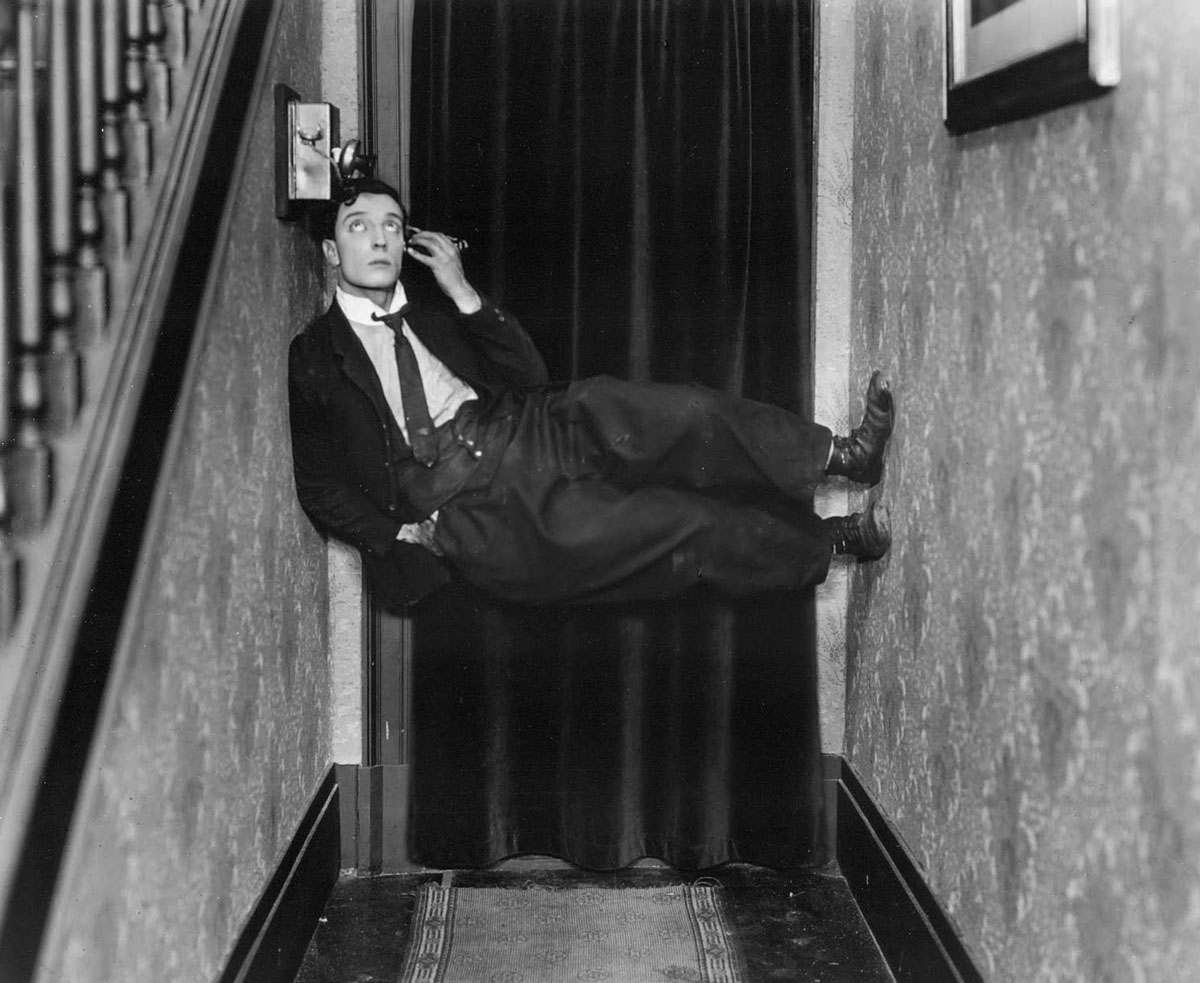

Whenever he could, Keaton removed them, averaging a mere 56 cards per movie. He pointed out that in the silent era, movies had, on average, 200+ title cards reporting dialogue. Keaton was not an artist of spoken or written language.


A classic example is Keaton standing in front of a two-story house as the front of it falls, but he is safe because he happens to be standing where a second-floor window lands.
Buster keaton movies directed series#
What you will find is a relentless series of gags. You will find nothing as heart-rending as that City Lights scene in any Buster Keaton movie. Though they may look similar, Keaton’s and Chaplin’s films could not be more different. Who knows what will catch on, so let’s just build something and see what happens. This “we’re making this up as we go” attitude reminds me of the personal computer industry in the 1980s. However, many of Keaton’s gags were so dangerous that they could only be shot once. Chaplin shot the final scene of City Lights an astonishing 342 times! I cannot imagine that happening under any circumstances these days. Chaplin’s approach was to shoot the same thing repeatedly until he felt he had the right footage to work with. This seemingly improvisational approach to filmmaking belies Keaton's precision in his films, particularly the short bits of physical comedy that he called “gags.” He would work out a gag, practice it carefully, and then shoot it. We just came up with what we thought was a good idea for a picture and went from there.” ”We never even thought of writing a script. “Neither Chaplin nor Harold Lloyd nor myself ever had a script before we started shooting a picture,” Keaton told an interviewer in the 1960s. She looks at him, and then this dialogue card flashes on the screen: “You?” She touches his hand, then begins to caress it, and suddenly recognizes him because touch was her way of identifying people prior to her sight-restoring surgery. She is amused by him until she takes pity and gives him a flower. Suddenly, he notices the Blind Flower Girl whose sight has been restored by his efforts. In that scene, the Little Tramp is really down on his luck, his clothes are in tatters, and he is the subject of mockery. There is no comparable scene in the entire length of Keaton’s filmography that comes close to matching the deep emotional power of the final scene in City Lights (1931). Keaton’s movies never move you the way Chaplin’s did.
Buster keaton movies directed movie#
But as each movie goes on, one thing that always begins to dawn on me is how much they demonstrate the human capacity for survival and triumph. And I mean a full-hearted, big old belly laugh. When you watch a Buster Keaton movie, you’ll surprise yourself at how many times you’ll be laughing. Keaton was one of the greatest geniuses of the 20th century. Orson Welles once said of Keaton: “He was, as we are now beginning to realize, the greatest of all the clowns in the history of cinema.” For him, movie-making was an evolving process of discovering what works and made sense at that moment. Keaton had said that most times when he started shooting a movie, he only had 50 percent of it all planned out. It is said of Mozart that he would have an idea for a symphony, and when he sat down to compose, he was just writing down what he had already heard in his head. He often started shooting without an actual script or even a fully fleshed-out storyline. As a filmmaker, he was unconcerned with carefully plotted stories. His movies are astonishing, hilarious, and unlike any you have ever seen before. Well, I am here to tell you that you are making a big mistake by not watching Buster Keaton movies. It seems like the kind of thing you just have to do, like wearing dress shoes once a year to some event you didn’t want to go to in the first place. And I get it Buster Keaton is a genius, right up there with Charlie Chaplin and Harold Lloyd as the three kings of the silent film era.


 0 kommentar(er)
0 kommentar(er)
